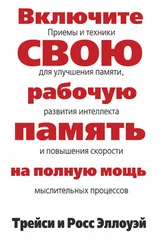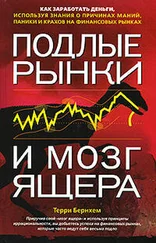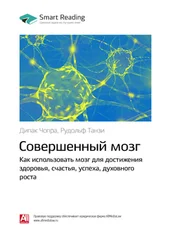Neural substrates of cognitive switching and inhibition in a face processing task, Camille Piguet, Virginie Sterpenich, Martin Desseilles, Yann Cojan, Gilles Bertschy, Patrik Vuilleumier, NeuroImage, Volume 82, 15 November 2013, pp. 489–499.
The role of inhibition in task switching: A review. Iring Koch, Miriam Gade, Stefanie Schuch, Andrea M. Philipp, Psychonomic Bulletin & Review, February 2010, Volume 17, Issue 1, pp. 1–14. http://download.springer.com/static/pdf/871/art%253A10.3758%252FPBR.17.1.1.pdf?auth66=1382011321_165db4d3f17d4383dce8638d6be473c5&ext=.pdf
Concurrent task effects on memory retrieval. Doug Rohrer, Harold E. Pashler. Psychonomic Bulletin & Review. March 2003, Volume 10, Issue 1, pp. 96–103.
Divided Representation of Concurrent Goals in the Human Frontal Lobes. Sylvain Charron,Etienne Koechlin. Science, 16 April 2010: Vol. 328 no. 5976, pp. 360–363.
Mayr, U. & Kliegl, R. (2000); Oulasvirta, A and Saariluoma, P. The laptop and the lecture: The effects of multitasking in learning environments. Helene Hembrooke and Geri Gay.Journal of Computing in Higher Education. Volume 15, Number 1. 2003.
Strategic modulation of response inhibition in task-switching. Kai Robin Grzyb and Ronald Hübner. Front Psychol. 2013; 4: 545. http://www.ncbi.nlm.nih.gov/pmc/articles/PM C3749430/
The effects of attentional load on saccadic task switching. Jason L. Chan, Joseph F. X. DeSouza. Experimental Brain Research. Июнь 2013, Volume 227, Issue 3, pp. 301–309.
The effects of attentional load on saccadic task switching. Jason L. Chan, Joseph F. X. DeSouza. Experimental Brain Research. June 2013, Volume 227, Issue 3, pp. 301–309.
Modulation of competing memory systems by distraction. Karin Foerde, Barbara J. Knowlton, and Russell A. Poldrack. PNAS. PNAS, 1 Aug. 2006, vol. 103 no. 31, pp. 11778–11783.
Enhanced Media Multitasking: The restorative cognitive effects of temporarily escaping the multitasking mindset. Jordan McCarthy. Thesis submission for the degree of master of arts in Communication. Stanford University. 7 June, 2013.
http://comm.stanford.edu/wp-content/uploads/2013/01/JordanMcCarthyMAThesis.pdf
fMRI reveals reciprocal inhibition between social and physical cognitive domains, Anthony I. Jack, Abigail J. Dawson, Katelyn L. Begany, Regina L. Leckie, Kevin P. Barry, Angela H. Ciccia, Abraham Z. Snyder, NeuroImage, Volume 66, 1 February 2013, pp. 385–401.
Are women better than men at multi-tasking? Gijsbert Stoet, Daryl B. O’Connor, Mark Conner, Keith R. Laws, BMC Psychology. October 2013, 1:18.
Gender differences in multitasking reflect spatial ability. Mäntylä, T (2013). Psychological Science, 24, pp. 514–520.
Multitasking. Buser, T., & Peter, N. (2012). Experimental Economics, 15, pp. 641–655.
Revisiting the gender gap in time-use patterns: multitasking and wellbeing among mothers and fathers in dualearner families. Offer S, & Schneider, B (2011). American Sociological Review, 76(6), pp. 809–833.
A deeper look at gender difference in multitasking: gender-specific mechanism of cognitive control. In Fifth international conference on natural computation (pp.13–17). Washington: IEEE Computer Society.
Gender differences in the relationship between long employment hours and multitasking. Sayer, LC (2007). In BA Rubin (Ed.), Workplace Temporalities (Research in the Sociology of Work) (pp. 403–435). Amsterdam: Elsevier. Task switching: interplay of reconfiguration and interference control. Vandierendonck, A., Liefooghe, B., Verbruggen F. (2010). Psychological Bulletin, 136 (4), pp. 601–626.
Who Multi-Tasks and Why? Multi-Tasking Ability, Perceived Multi-Tasking Ability, Impulsivity, and Sensation Seeking. Sanbonmatsu D.M., Strayer D.L., Medeiros-Ward N., Watson J.M. (2013) PL oS ONE 8(1): e54402.
Cognitive control in media multitaskers. Eyal Ophir, Clifford Nass, Anthony D. Wagner. PNAS, 15 September, 2009 vol. 106 no. 37, pp. 15583-15587.
Interview Clifford Nass. PBS Frontline. http://www.pbs.org/wgbh/pages/frontline/digitalnation/interviews/nass.html
Who Multi-Tasks and Why? Multi-Tasking Ability, Perceived Multi-Tasking Ability, Impulsivity, and Sensation Seeking. Sanbonmatsu D.M., Strayer D.L., Medeiros-Ward N., Watson J.M. (2013) PL oS ONE 8(1): e54402.
Интервью Клиффорда Насса в программе PBS Frontline. http://www.pbs.org/wgbh/pages/frontline/digitalnation/interviews/nass.html
http://news.stanford.edu/news/2009/august24/multitask-researchstudy-082409.html
Supertaskers: Profiles in extraordinary multitasking ability. Jason M. Watson and David L. Strayer. Psychonomic Bulletin & Review. 2010, 17 (4), pp. 479–485.
Distracted driving in elderly and middle-aged drivers. Kelsey R. Thompson et al. Accident Analysis & Prevention. Volume 45, March 2012, pp. 711–717.
Aging and dual-task performance: A meta-analysis.Verhaeghen, Paul; Steitz, David W.; Sliwinski, Martin J.; Cerella, John. Psychology and Aging, Vol. 18(3), Sep, 2003, pp. 443–460.
Distracted driving in elderly and middleaged drivers. Kelsey R. Thompson et al. Accident Analysis & Prevention. Volume 45, March 2012, pp. 711–717.
Deficit in switching between functional brain networks underlies the impact of multitasking on working memory in older adults. Wesley C. Clapp, Michael T. Rubens, Jasdeep Sabharwal, and Adam Gazzaley. PNAS, 26 April, 2011 vol. 108. http://www.pnas.org/content/108/17/7212.full.pdf+html
Training effects on dual-task performance: Are there age-related differences in plasticity of attentional control? Bherer, Louis; Kramer, Arthur F.; Peterson, Matthew S.; Colcombe, Stanley; Erickson, Kirk; Becic, Ensar. Psychology and Aging, Vol. 20 (4), Dec. 2005, pp. 695–709. http://www.brams.umontreal.ca/cours/files/PSY-6022A2006/LBherer/Lectures/Bherer%20et%20al_2005.pdf
Интервью в журнале BDW, 11 апреля 2013 г., стр. 6.
Terry Judd, Making sense of multitasking: The role of Facebook, Computers & Education, Volume 70, Jan. 2014, pp. 194–202.
GENERATION M2. Media in the Lives of 8– to 18-Year-Olds. Victoria J. Rideout, M.A.Ulla G. Foehr, Ph.D.and Donald F. Roberts, Ph.D.A Kaiser Family Foundation Study. JANUARY 2010.
http://myweb.wwu.edu/karlberg/444/readings/GenM2.pdf
См. также: Teens and mobile phones. Lenhart, A., Ling, R., Campbell, S., & Purcell, K. (2010). Washington, DC: Pew Internet and American Life Project. http://pewinternet.org/Reports/2010/Teens-and-Mobile-Phones.aspx
BMRB International (Бюро исследований британского рынка), исследование ‘Increasing Screen Time [цитируется в “DOES NOT COMPUTE. Screen Technology in Early Years Education”. Aric Sigman. Оригинал не найден.] is Leading to Inactivity of 11-15s’, Youth TGI Study.
An Empirical Examination of the Educational Impact of Text Message-Induced Task Switching in the Classroom: Educational Implications and Strategies to Enhance LearningIn addition. Larry D. Rosen, Alex F. Lim, L. Mark Carrier, and Nancy A. Cheever. Psicologia Educativa. Vol. 17, n. 2, 2011, pp. 163–177.
Читать дальше
Конец ознакомительного отрывка
Купить книгу












